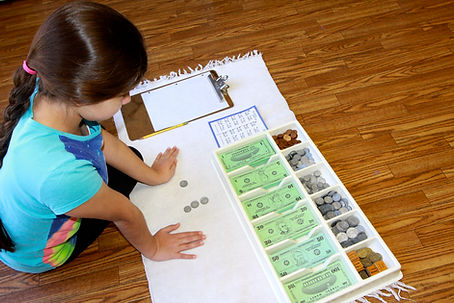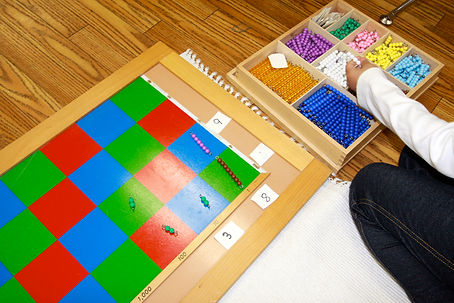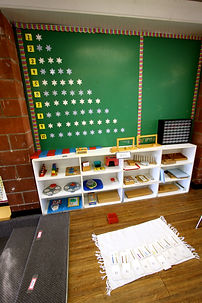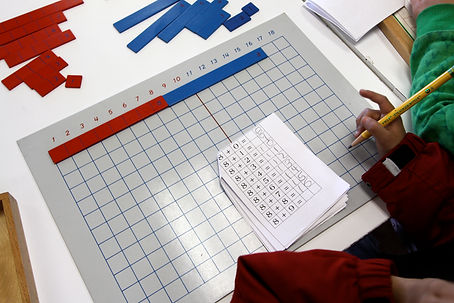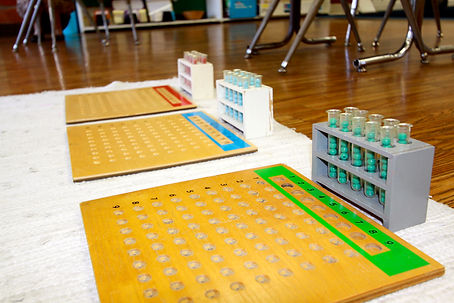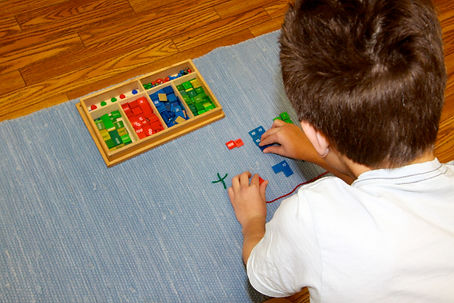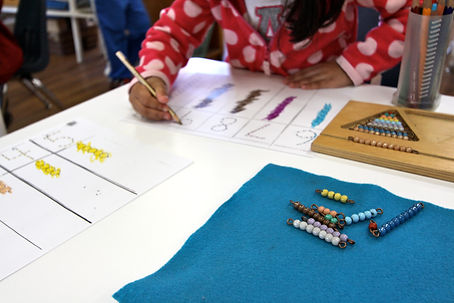Students who learn math by rote method often do not have a real understanding or ability to put their skills to use in everyday life. Montessori students use hands-on learning materials that make abstract concepts clear and concrete. Using math materials in the early years lays the foundation for later cognitive development and prepares students for the gradual transition to abstract thinking – transforming ideas into actions using concrete materials.
Mathematics are introduced by concept, not solely by pattern and are carefully engineered to introduce both the concept of quantity and the related symbols, beginning with numbers 0 through 9. The child is introduced to concepts with visual and tactile material that corresponds to each new idea. The simplicity and the tactile nature of the materials allows the child to not only calculate, but to achieve a deep understanding of number concepts and function. A strong understanding of mathematics provides children with a concrete foundation to find alternative solutions to problems. They are not dependent on following patterns, but rather learn the reasons for a function and learn to use logic to apply it in various situations. Due to the concrete nature of the materials, the child is able to work with the basic concepts of fractions, geometry and algebra.
The Montessori math curriculum is based on the European tradition of “Unified Math,” which has only recently been recognized by leading American educators. Unified Math introduces elementary students to the study of the fundamentals of algebra, geometry, logic and statistics along with the principle of arithmetic. This study continues over the years, weaving together subjects that traditional schools normally ignore until the secondary grades.
